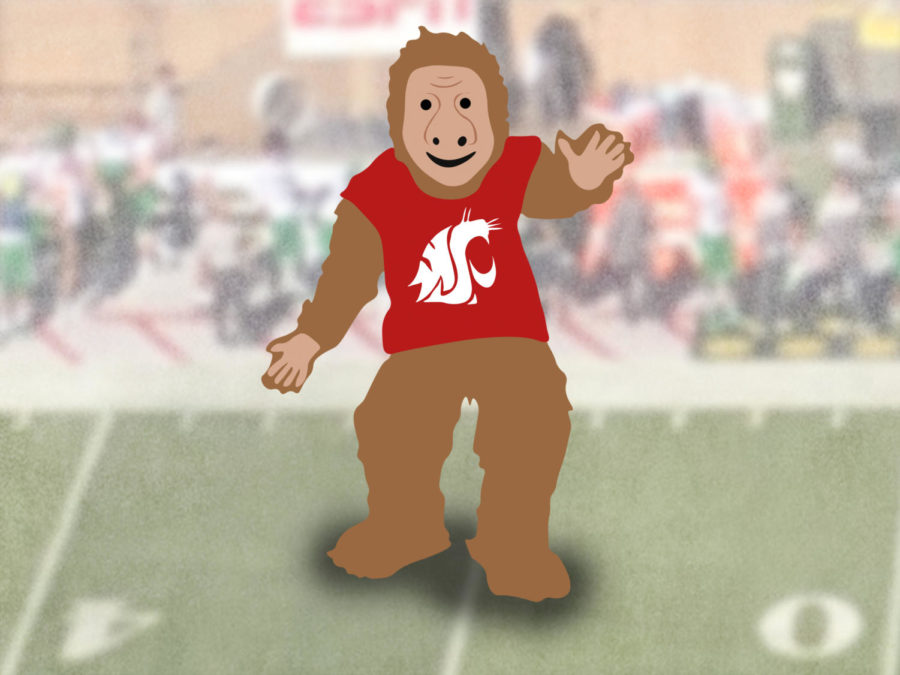SATIRE: Mascots tend to be a friendly presence, but what is really under the mask?
Like many well-known and well-loved mascots, our own Butch T. Cougar could be hiding something
Mysterious creatures might be hiding in plain sight on WSU Pullman’s campus.
June 4, 2021
Mascots are weird. From Syracuse University’s Otto the Orange, Miami Heat’s Burnie, who has allegedly been sued more than once, or King Cake Baby in New Orleans, to the strange yam ninja Jinenga of Shiroi, a city in Japan’s Chiba Prefecture, mascots are pretty bizarre.
Our own beloved Butch T. Cougar is no exception, although he is much cuter than King Cake Baby. King Cake Baby is enough to make me beg for mercy rather than cake — he’s horrifying and I wonder if rather than bringing king cakes to people during Mardi Gras, he secretly wants to eat us.
Mascots are comparable to cryptids. They only show up under certain conditions, like sports events with a lot of people. Now, you might be thinking something like “Bigfoot doesn’t do that, he’s elusive,” or, “The Jersey Devil would never, aren’t cryptids supposed to hide from the public eye?” but really think about it.
“I think having a school for it is just a cover, so they can congregate without anyone getting suspicious,” said mascot school reject Patti Mann.
Mann said that she followed her school’s mascot after a game once, all the way back into the locker room, but no one ever exited the suit. According to Mann, the suit simply collapsed and a horrid acrid stench filled the air.
“I don’t care what you say — no living creature could last a minute in that suit, not with the smell being what it was,” she insisted, “I think it singed off some nose hairs.”
While we assume someone lurks inside that sweat-scented sauna suit we call a mascot costume, the secret nature of a mascot’s identity leaves us to wonder. Is there really a person inside that suit at all? Mann seems to think there is not.
Irwin Biggs, self-proclaimed cryptozoologist and paranormal investigator, claims that while he would not define a school mascot as a cryptid, they are comparable in some ways.
According to Biggs, cryptids and mascots are both tied to a certain location or story. Butch, for example, is tied to WSU. He theorizes that mascots may appear only in large groups because their guise permits them to be seen as approachable, not dangerous, thus reducing the risk of violent confrontation.
Citing an old Japanese superstition about objects taking on a life of their own upon reaching a certain age, as well as the philosophy that belief gives power, Biggs said he suspects that mascot suits either house an entity or are an entity themselves, feeding off of human emotion.
Given the popularity of mascots and the anonymity of the assumed person inside, Biggs said the nature of mascots lends itself perfectly to hiding an inhuman entity.
Regardless of the smell noted by Mann being rather sinister, Biggs said it is highly unlikely that mascot suits house hostile entities. So long as we continue to feed them, they should not turn on us.
While Mann said she is comforted by Biggs’ theory on the true nature of mascots, considering she thought she would die when she smelled the suit and believes no human should ever be placed inside one, there are still many questions left regarding the origin of the mascot suits.
No matter which is true, I cannot say I find myself any less wary of mascots. Not with King Cake Baby’s face still haunting my mind.









